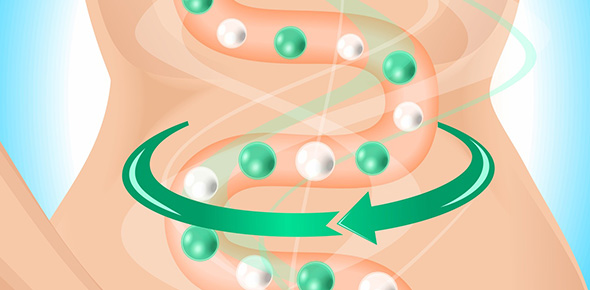Related Flashcards
Related Topics
Cards In This Set
| Front | Back |
|
GONORRHEA |
Second most frequently reported STD in the USCaused by a gram negative diplococcusIncubation period is 3-8 daysConfers no immunity to subsequent infectionsElicits inflammatory response but if left untreated leads to formation of fibrous tissue and adhesions--> can be responsible for strictures and tubal abnormalities leading to tubal pregnancy, chronic pelvic pain and infertility
|
|
GONORRHEA IN MEN |
Usually in the urethraSx: dysuria and profuse purulent urethral discharge developing 2-5 days after infection; painful or swollen testicles
|
|
GONORRHEA IN WOMEN |
Often asymptomatic or minor SxMay complain of vaginal discharge, dysuria or frequency on urination; changes in menstruation are possible but disregarded by womenAfter incubation period: redness & swelling occur at cervix or urethra; greenish-yellowish exudate often develops with a potential for abscess formationMore common from men to women b/c vagina acts as natural reservoir for infectious secretions
|
|
COMPLICATIONS OF GONORRHEA |
Men--> prostatitis, urethral strictures and sterility from orchitis or epididymisWomen--> PID, Bartholin's abscess, ectopic pregnancy and infertility Disseminated Gonococcal Infection (DGI) (rare)--> appearance of skin lesions, arthralgia, arthritis or endocarditis
|
|
EYE INFECTIONS IN NEWBORNS |
Prophylactic drug such as erythromycin ophthalmic ointment or silver nitrate aqueous solution into eyes of all newborns in a single application
|
|
DRUG THERAPY GONORRHEA |
Treatment instituted w/o awaiting culture resultsCurative in early stage with a cephalosporin antibiotic Cefixime--> orally in a single dose Rocephin--> Single IMFluoroquinolones are not accepted tx due to resistanceChlamydial & Gonococcal infections --> azithromycin or doxycycline to tx regimenAbstain from sexual activity and alcohol--> has irritant affect on healing urethral wallsMen--> cautioned against squeezing the penis to look for further discharge
|
|
DOXYCYCLINE |
Avoid unnecessary exposure to sunlightDon't take with antacids, iron products or dairy products
|
|
SYPHILIS |
Increased rate mainly due to men having sex w/ menCaused by Treponema pallidum--> thought to enter body through very small breaks in the skin or mucous membranesNot all who are exposed acquire diseaseAcquired through sexual contact, contact with infectious lesions and sharing of needles among IV drug usersIncubation average 21 daysCongenital--> transmitted from mother to fetus in utero after 10th week of pregnancy-->high risk of stillbirthAssociation between syphilis and HIV and can be present together in same person
|
|
COMPLICATIONS OF SYPHILIS (MAINLY LATE STAGE) |
Gummas of benign late syphilis may produce irreparable damage to bone, liver or skinCV Syphilis--> aneurysm rupture possiblity w/ increasing sizeAortic Valve involvement--> scarring of valve results in aortic valve insufficiency and HFNeurosyphilis--> causes degeneration of the brain with mental deterioration, sensory nerve involvement problems, sudden attacks of pain making diagnosis difficult, Loss of vision and sense of position in the feet and legs and walking may become difficult with stability loss
|
|
ASYMPTOMATIC NEUROSYPHILIS |
In the CSF, change such as increased WBC, increased total protein and positive treponemal antibody test are indicative of this
|
|
SYPHILIS DRUG THERAPY |
Penicillin G Benzathine or aqueous procaine penicillin remains tx of choice for all stagesPts. w/ neurosyphilis must be carefully monitored with periodic serologic testing, clinical evaluation @ 6 month intervals and repeat CSF exams for at least 3 yearsAll sexual contacts w/in last 90 days be treated
|
|
PRIMARY STAGE SYPHILIS |
Chancres--> painless indurated lesions of penis, vulva, lips, mouth, vagina and rectum; occurs 10-90 days after inoculation: exudate from chancre highly infectious; blood is infectiousRegional lymphadenopathy and genital ulcersMost infectious stage but can occur at any stage w/ moist lesionlasts for 3-8 weeks
|
|
SECONDARY STAGE SYPHILIS |
Occurs few weeks after chancre occurFlu-like SxCutaneous lesions: bilateral, symmetric rash that begins on trunk and involves palms and soles; mucous patches in mouth, tongue or cervix and moist weeping papules in the anal/genital areaExudate from skin and mucous membrane lesions are high infectiouslasts 1-2 yrs
|
|
LATENT STAGE SYPH |
Absence if signs/sxDx based on positive specific treponemal antibody test together w/ normal CSF and absence of clinical manifestationsNoninfectious after 4 yr., possible placental transmissionLasts throughout life or progression to late stage
|
|
LATE (TERTIARY) SYPH |
Appearance 3-20 yr. after initial infectionGummas (chronic, destructive lesions affecting any organ of body, especially skin, bone liver, mucous membranesCV: aneurysms, heart valve insufficiency, HF , aortitisNeurosyphilis: general paresis (personality changes from minor-psychotic, tremors, physical/mental deterioration), tabes dorsalis (ataxia, areflexia, paresthesias, lighting pains, damages joints), speech disturbanceNon infectious; spinal fluid possibly containing organismChronic w/o Tx and possibly fatal
|






